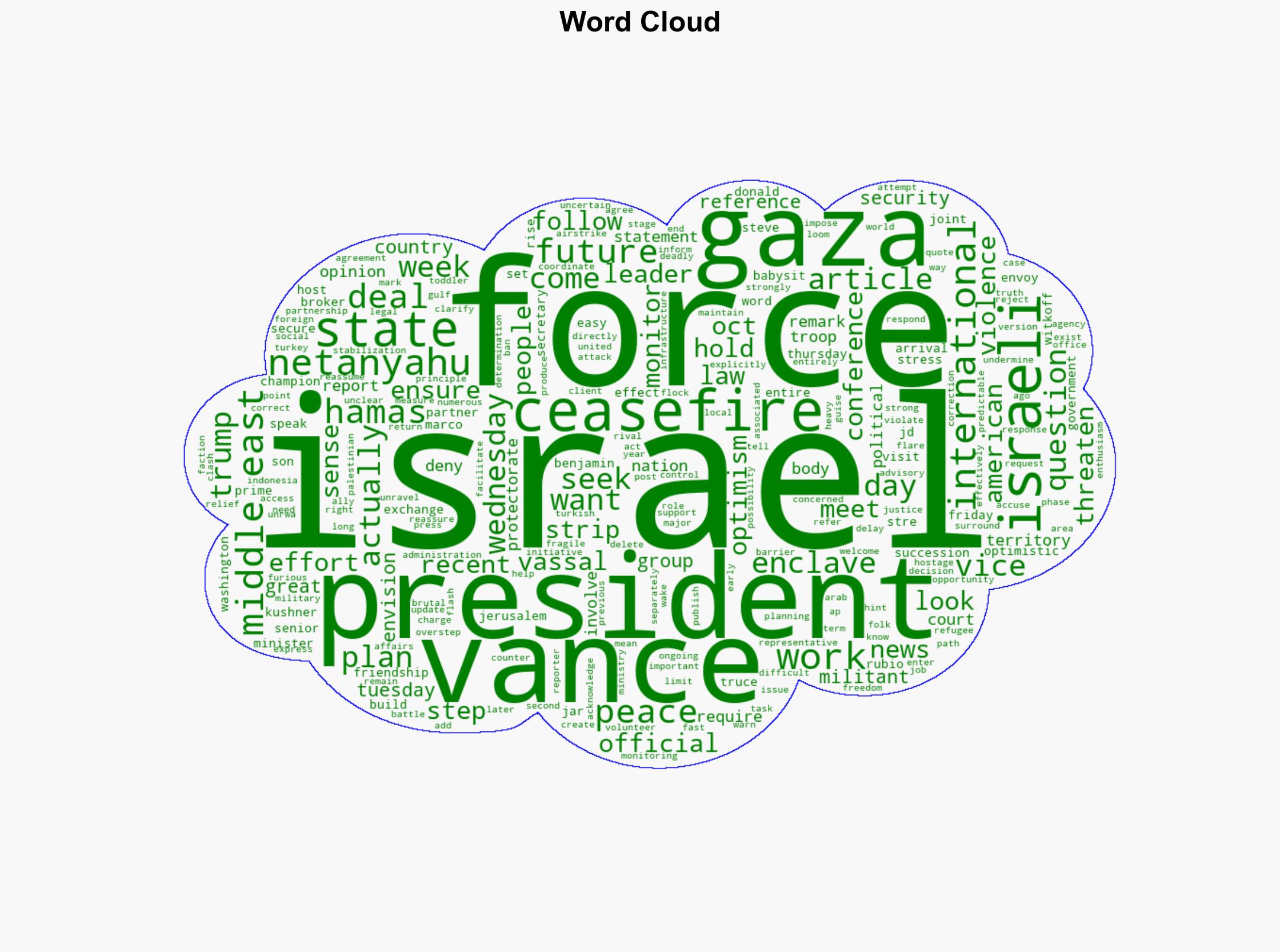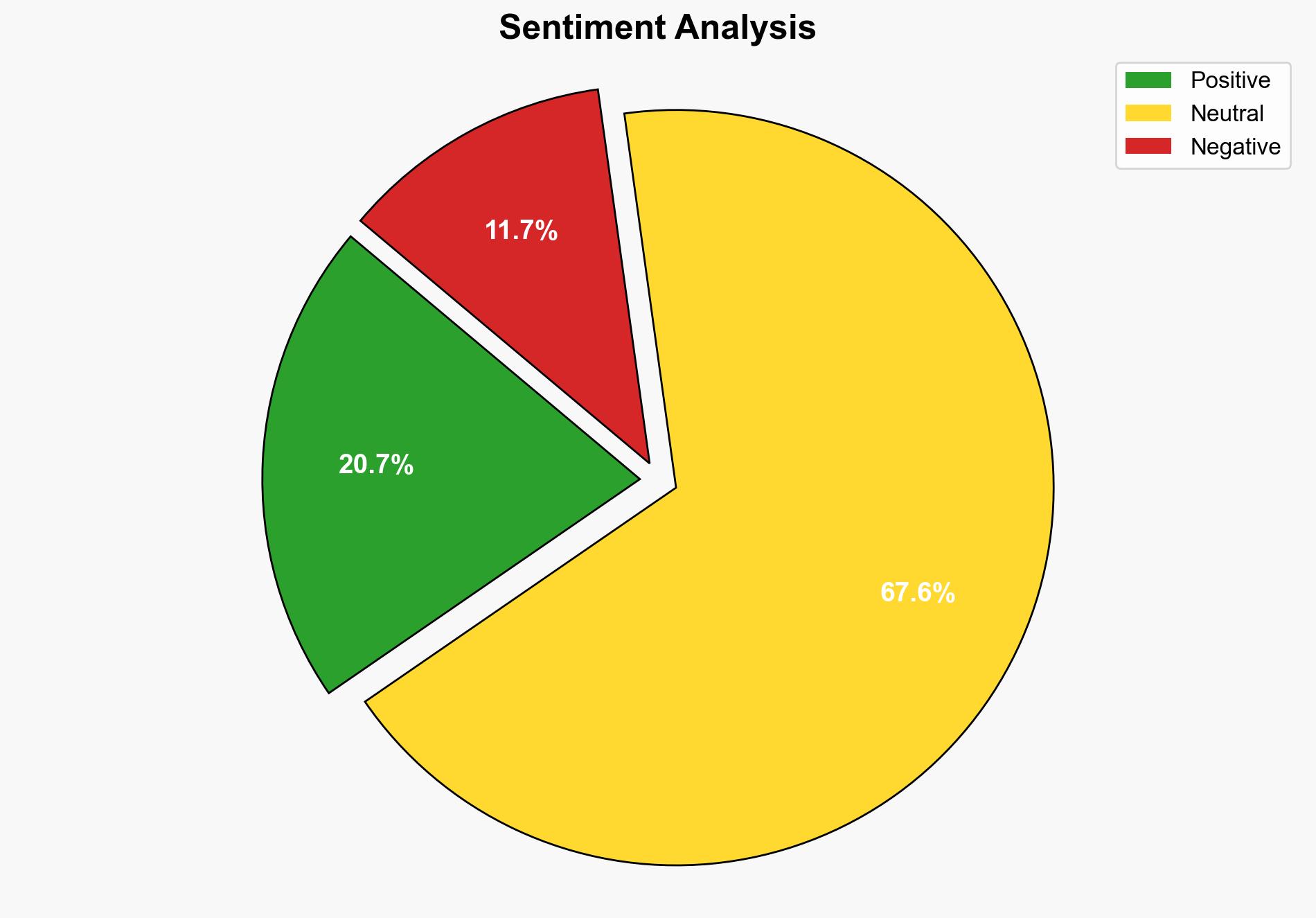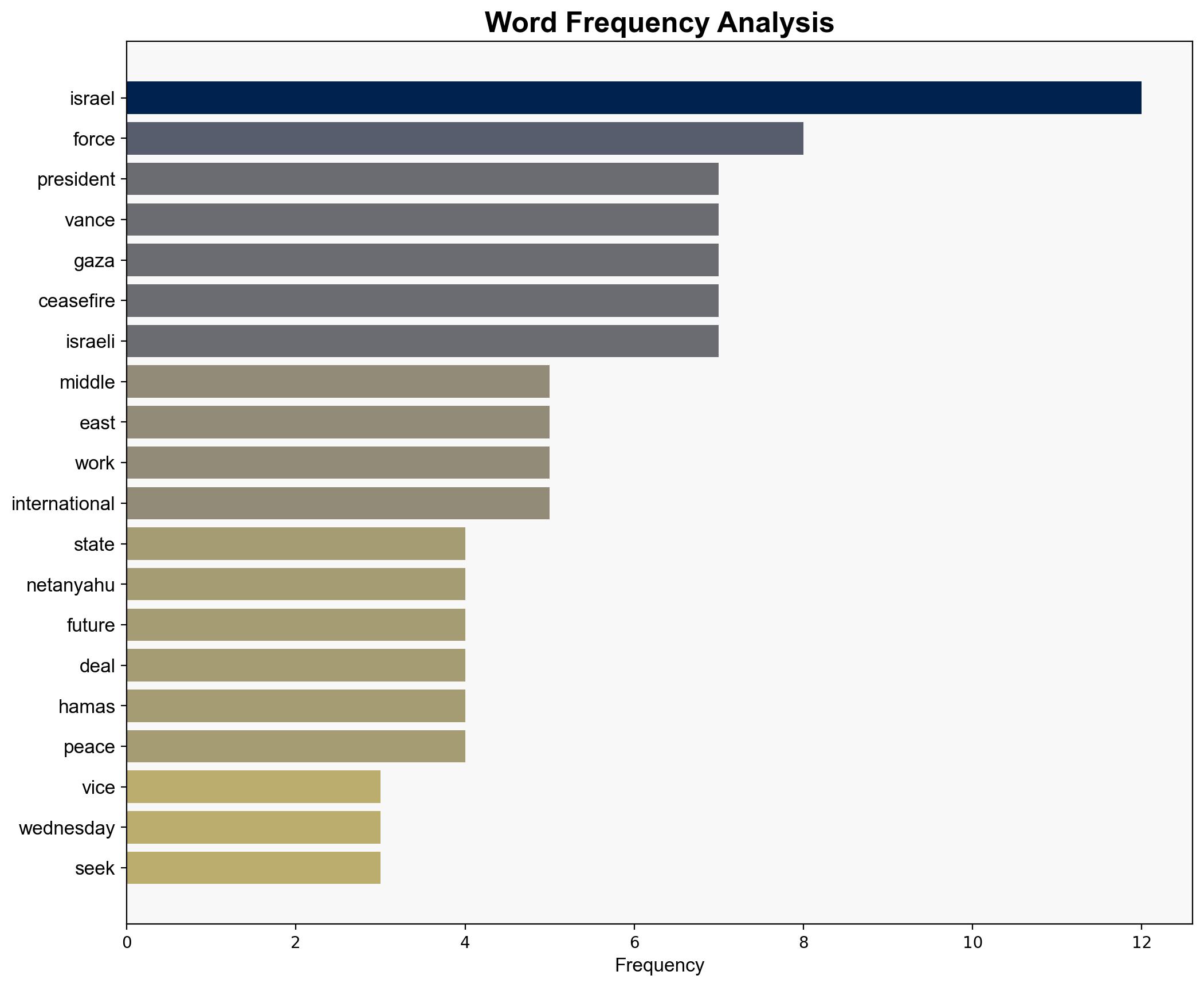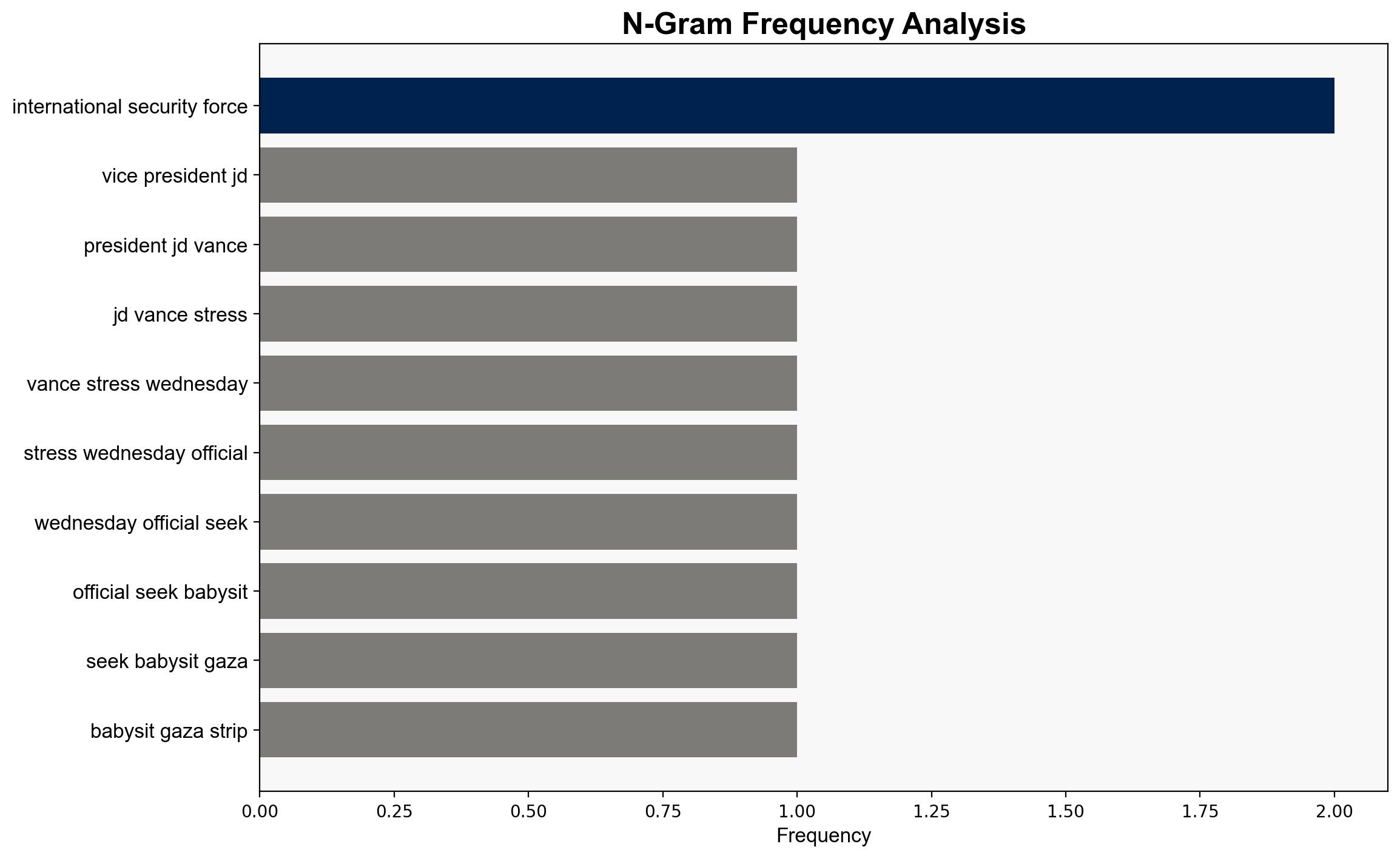Vance says he’s not in Israel to babysit Gaza ceasefire as next steps remain uncertain – NBC News
Published on: 2025-10-22
Intelligence Report: Vance says he’s not in Israel to babysit Gaza ceasefire as next steps remain uncertain – NBC News
1. BLUF (Bottom Line Up Front)
The strategic judgment is that the situation in Gaza remains highly volatile with significant uncertainty surrounding the ceasefire’s sustainability. The most supported hypothesis is that the U.S. is attempting to balance its role as a mediator without appearing to dominate the process, while preparing for potential escalation. Confidence level is moderate due to the complexity of regional dynamics and the involvement of multiple stakeholders. Recommended action includes strengthening diplomatic channels and preparing contingency plans for potential ceasefire violations.
2. Competing Hypotheses
1. **Hypothesis A**: The U.S. aims to facilitate a sustainable ceasefire in Gaza by supporting an international stabilization force, thereby reducing the risk of direct involvement and maintaining regional stability.
2. **Hypothesis B**: The U.S. is primarily focused on maintaining its strategic alliances in the Middle East, using the ceasefire as a diplomatic tool to reinforce partnerships rather than genuinely addressing the root causes of the conflict.
Using ACH 2.0, Hypothesis A is better supported by the presence of high-level U.S. officials in Israel and discussions of an international force, indicating a proactive approach to conflict resolution. Hypothesis B is supported by the emphasis on partnerships and the avoidance of direct intervention, suggesting a strategic rather than humanitarian focus.
3. Key Assumptions and Red Flags
– **Assumptions**: It is assumed that international forces can effectively stabilize Gaza without exacerbating tensions. Another assumption is that regional partners will cooperate with U.S. initiatives.
– **Red Flags**: The potential involvement of countries like Turkey and Indonesia could complicate the situation due to differing geopolitical interests. The denial of ceasefire violations by Hamas raises concerns about the reliability of intelligence.
– **Blind Spots**: There is limited information on the specific terms of the ceasefire and the roles of various stakeholders, which could impact the analysis.
4. Implications and Strategic Risks
The sustainability of the ceasefire is uncertain, with risks of renewed violence if underlying issues are not addressed. The involvement of international forces could lead to regional tensions if perceived as foreign interference. Economic impacts include potential disruptions to regional trade and investment. Geopolitically, failure to maintain the ceasefire could weaken U.S. influence in the Middle East.
5. Recommendations and Outlook
- Enhance intelligence-sharing with regional partners to monitor ceasefire compliance.
- Engage in multilateral diplomacy to address underlying grievances and support economic development in Gaza.
- Scenario Projections:
- Best Case: Successful stabilization leads to long-term peace and economic growth in the region.
- Worst Case: Ceasefire collapses, leading to widespread conflict and humanitarian crisis.
- Most Likely: Periodic violations occur, but ceasefire holds with international support.
6. Key Individuals and Entities
– J.D. Vance
– Benjamin Netanyahu
– Donald Trump
– Steve Witkoff
– Jared Kushner
– Marco Rubio
7. Thematic Tags
national security threats, regional stability, international diplomacy, Middle East peace process





